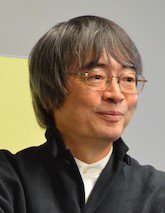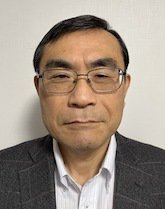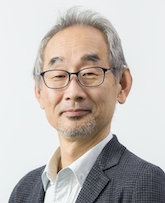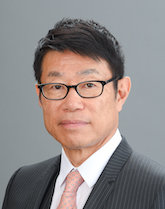MY VISION
Implementing Responses to Uncertainty in Our Societies
Natural disasters, pandemics, IT system failures; our modern societies face a wide variety of unpredictable events. In this issue of My Vision, we explore how these unpredictable events can be made predictable.
EXPERT OPINIONS
- Implementing Responses to Uncertainty in Our Societies
How should we prepare for unpredictable future contingencies?
What should we do now in order to make our future responses more effective?
-
01
Detecting Fluctuations and Responding to Contingencies in Advance
 Kazuyuki Aihara Distinguished Professor / Professor Emeritus, The University of TokyoOur field of research is mathematical engineering, in which we use mathematics to obtain solutions to...
Kazuyuki Aihara Distinguished Professor / Professor Emeritus, The University of TokyoOur field of research is mathematical engineering, in which we use mathematics to obtain solutions to... -
02
Improving the Ability of Organizations to Learn and Anticipate Based on Data from “Normal” Operations
 Masaharu Kitamura Emeritus Professor, Tohoku University / Director, TeMS Co., Ltd.The Great East Japan Earthquake caused the loss of control of a nuclear power plant. It is considered..
Masaharu Kitamura Emeritus Professor, Tohoku University / Director, TeMS Co., Ltd.The Great East Japan Earthquake caused the loss of control of a nuclear power plant. It is considered.. -
03
Recognize the Importance of Networking Technology
 Toshimitsu Ushio Professor, Department of Systems Science, Graduate School of Engineering Science, Osaka UniversityFailures that occur when multiple devices are networked are a serious danger to our societies. A series of...
Toshimitsu Ushio Professor, Department of Systems Science, Graduate School of Engineering Science, Osaka UniversityFailures that occur when multiple devices are networked are a serious danger to our societies. A series of... -
04
Make the Transition to Software Development That Incorporates Uncertainty, Rather Than Aiming for Perfection
 Juichi Takahashi Director and CTSO, AGEST Inc., and Director, AGEST Testing Lab.The software for the systems that make up the diverse infrastructure of our societies is increasing...
Juichi Takahashi Director and CTSO, AGEST Inc., and Director, AGEST Testing Lab.The software for the systems that make up the diverse infrastructure of our societies is increasing... -
05
What Can and Do We Want to Know Under Uncertainty?
 Miriam Teschl Associate Professor, Ecole des hautes études en sciences sociales (EHESS)The COVID-19 pandemic highlighted two important facts: First, the unpredictable nature of events and...
Miriam Teschl Associate Professor, Ecole des hautes études en sciences sociales (EHESS)The COVID-19 pandemic highlighted two important facts: First, the unpredictable nature of events and...
ABOUT THIS ISSUE
-
The Ability to Respond to Uncertainty Determines the “Quality” of a Society
– The Key is Real-time, Two-way Communication Between the State and Individuals
The Ability to Respond to Uncertainty Determines the “Quality” of a Society
– The Key is Real-time, Two-way Communication Between the State and IndividualsYasufumi Kanemaru Chairperson, NIRA/ Chairman and President, Group CEO, Future CorporationEvents such as natural disasters, pandemics, and large-scale failures due to system anomalies are said to be “unpredictable events,” which could have a serious impact on the survival of businesses and society as a whole. Is it genuinely impossible to anticipate these unpredictable events? What methods could we use to prepare for them? What should be done on a regular basis to make such methods more effective? Attempts are being made to overcome uncertainty that cross the boundaries of traditional disciplines. In this issue of My Vision, experts in the field discuss their efforts to respond to uncertainty.



expert opinions
01
Detecting Fluctuations and Responding to Contingencies in Advance
Detecting Fluctuations and Responding to Contingencies in Advance
Kazuyuki Aihara Distinguished Professor / Professor Emeritus, The University of Tokyo
Our field of research is mathematical engineering, in which we use mathematics to obtain solutions to real-world problems. One of the main areas we study is “complex systems.” Here, it is not sufficient to simply understand numerous interacting elements and the overall behavior that results from their interaction. It is necessary to focus on the mutual interaction of network structures and hierarchical feedback from the whole to the elements. In relation to many of the remaining critical issues of this century, such as the functioning of the brain, the spread of infectious diseases, energy, information, transportation, and the economy, we are attempting to use the theory of complex systems in order to detect signs of problematic events before they occur.
In the case of medicine, our strategy is to detect “pre-disease states” before they manifest as a disease, and to treat them before they develop further. Immediately prior to the transition from a healthy state to a diseased state, we can observe unique signs that are not seen in a normal healthy state. This is a state in which “fluctuations” (dynamic changes) in biomarkers, or biometric signals, are occurring. We defined this state as a “pre-disease state,” and developed the theory of “Dynamical Network Biomarkers (DNB),” a mathematical theory that quantitatively detects changes in the magnitude of fluctuations of multiple markers and the correlations between them.
This has made it possible to detect pre-disease states, which has been difficult to do by simply looking at the static biomarkers, i.e., average values, which have traditionally been most widely used in the diagnosis of disease. In a joint research project conducted with the University of Toyama, the research team discovered that fluctuations in the network of a specific gene group increased in a metabolic syndrome mouse model several weeks before the onset of disease, and furthermore, when the feed of this mouse model was mixed with Chinese medicine intended for treatment, an effect of suppression of the onset of disease through the reduction of fluctuations during the pre-disease state was confirmed.
In this era of Big Data , sensors and IoT technology have advanced to a point making it possible to obtain the large data sets necessary for mathematical analysis. The method of analysis that we propose is simple enough to be used by even novice data scientists. The theory and the analytic methods for detecting early warning signals have already been established. In addition to the detection of pre-disease states, we are also conducting research on the signs of power system instability, traffic congestion, and major economic fluctuations. We have also been able to identify the occurrence of waves of COVID-19 as state transitions, and have shown that we can detect the signs before the next wave of the virus arrives. As large-scale data are collected in a variety of fields and the analysis of predictive signs advances, “uncertainty” will gradually decrease. In other words, it can be expected that systems will be created so that we can detect signs before an undesirable event occurs, and to take preventive measures.
Professor Aihara has long been involved in the formulation of mathematical models of various real-world complex systems, research that has been widely applied in fields including engineering, industry, and medicine, and which has created the groundwork for mathematical modeling that will aid in the solution of social problems. He is a specialist in mathematical engineering and chaos engineering. He took his Ph.D. in engineering from The University of Tokyo in 1982. Professor Aihara assumed his current position in 2020, following a career that included a full professorship in The University of Tokyo’s Graduate School of Engineering. He also serves as Deputy Director of The University of Tokyo’s International Research Center for Neurointelligence. Professor Aihara has published numerous papers in “Science” and other leading international journals.
02
Improving the Ability of Organizations to Learn and Anticipate Based on Data from “Normal” Operations
Improving the Ability of Organizations to Learn and Anticipate Based on Data from “Normal” Operations
Masaharu Kitamura Emeritus Professor, Tohoku University / Director, TeMS Co., Ltd.
The Great East Japan Earthquake caused the loss of control of a nuclear power plant. It is considered that this was because the scale of the tsunami that overwhelmed the plant exceeded expectations. However, even before the earthquake, voices had been raised pointing out the danger of a massive tsunami. The global financial crisis, the deterioration of U.S.-China relations, the COVID-19 pandemic: each of these is taken to be a typical example of events in an “age of uncertainty.” However, I believe that these events were foreseeable, and I strongly hold to the position that it is important for us not to miss signs and warnings, and to improve our ability to foresee possible future events.
Traditionally, safety has been defined as freedom from unacceptable risk. But if measures are taken to eliminate “unacceptable risk,” the strategy focuses on eliminating the causes of accidents and failures that lead to dangerous situations. However, the increasing complexity of the socio-technical systems employed by our modern societies cannot be dealt with by such traditional organizational management. Seeking to realize safety only by moving in the direction of correcting errors or standardizing the behavior of employees of organizations, without taking into account the fact that systems and environments change from moment to moment, is not sufficient as a safety measure in an age of uncertainty. A new concept of safety is needed (See note).
What organizations need to acquire is the robustness to resist being overcome by events, to limit damage, and to rapidly return to their previous state. These characteristics are termed “resilience,” and the measures required to achieve them are termed “resilience engineering.” The key here is the enhancement of four potentials: responding, monitoring, anticipating, and learning.
Major incidents are rare, but the signs that portend them are present in our daily activities. By analyzing the behavior of systems and environments during “normal” times, we can understand the signals that can act as warning signs. Adjustments in response to fluctuations are made on a daily basis. It is important to learn lessons from examples of good practice under normal conditions and to extrapolate those lessons to the future in order to prepare for major disturbances. However, preventing future damage is costly. Given that perfect responses will be difficult to implement, it will be best for us to adopt the most effective possible measures within the constraints of limited time and resources, taking into account the efficiency-thoroughness trade-off of the response.
(Note) The conventional concept of safety is termed “Safety-I,” and is defined as “as little as possible that can go wrong to prevent continued functioning.” The concept of safety that encompasses robust tolerance and resilience is termed “Safety-II,” and is defined as “as much as possible that can go right while allowing continued functioning.”
A leading authority on resilience engineering (RE), Professor Kitamura has long been engaged in research and development of methods of implementation of RE and its application to a variety of fields. He specializes in nuclear safety engineering, reactor instrumentation engineering, human factors, RE and system safety. He holds a Ph.D. (1970) from Tohoku University’s Graduate School of Engineering. Before assuming his current position in 2012, he served as an assistant professor, professor, and Director of Tohoku University’s New Industry Creation Hatchery Center. In addition to his research in the field of RE, Professor Kitamura is also actively promoting direct dialogue with the public on a variety of issues related to nuclear technology.
03
Recognize the Importance of Networking Technology
Recognize the Importance of Networking Technology
Toshimitsu Ushio Professor, Department of Systems Science, Graduate School of Engineering Science, Osaka University
Failures that occur when multiple devices are networked are a serious danger to our societies. A series of major system failures at Mizuho Bank in 2021 were reportedly triggered by a malfunction or misconfiguration of a single piece of equipment. As far back as 2003, a major power outage in the northwestern United States and Canada, which included New York, is said to have been triggered by a failure at a specific power plant. As we see from this, many large-scale failures that occur due to networking are butterfly effects resulting from local failures (See note).
In order to allow prompt action to be taken in the event of a network system failure, it is necessary to conduct a detailed analysis of what will happen when the system is networked. If a failure occurs, it is essential to ensure that only the information necessary to determine the cause of that failure and to allow decisions to be made towards recovery is accurately conveyed to the operators. If the operators receive a high volume of information that is not relevant to identifying the cause of the problem, it may lead to delays or errors in their judgment, which in turn may lead to a more dangerous situation. It is important to determine the “quality of information,” i.e., the nature of each piece of information, how it is used, and what impact it may have, and to manage information hierarchically before emergencies occur. For example, information is treated differently depending on whether it relates to something that could lead to a dangerous situation or something that could directly threaten peoples’ lives.
After a failure has occurred, it is important to verify the cause, collect data one by one from the time of the failure, and work steadily to improve the system. However, while responses based on past cases can be left to AI, in the case of unexpected events such as cyber-attacks from unknown sources or the spread of novel viruses, which are likely to occur frequently in the future, human judgment and response based on the essential information are the only way to deal with them. It would be more efficient to determine in advance the data that are necessary for human judgment, have AI learn it, and have AI send the necessary data to human operators in a contingency.
Up to the present, the importance of technologies that contribute to networking has been little recognized in Japan. This is because Japan has been strong in the development of visible “things,” but has neglected software, which is an invisible service. The highly developed information and communication technology must be used to networked objects, boosting the level of system technologies to realize new functions. In doing so, we must not forget to improve technologies that not only enable users to employ networked systems safely and securely, but also contribute to resilience, minimizing any butterfly effect stemming from local failures.
(Note): A phenomenon in which the slightest trigger causes an extremely large impact. The term is used as a byword for the unpredictability of chaos theory.
Professor Ushio is engaged in education and research in the field of the analysis, design, and control of complex systems, including the theory of the control of complex systems in which subsystems with different properties are interconnected. He took his Ph.D. in 1985 from the Department of Systems Science in Kobe University’s Graduate School of Natural Science. He was a visiting research assistant in UC Berkeley’s Department of Mechanical Engineering, and an associate professor in Osaka University’s Faculty of Engineering. He has been a professor in Osaka University’s Graduate School of Engineering Science since 1997, and has published numerous academic papers and other research results both in Japan and abroad.
04
Make the Transition to Software Development That Incorporates Uncertainty, Rather Than Aiming for Perfection
Make the Transition to Software Development That Incorporates Uncertainty, Rather Than Aiming for Perfection
Juichi Takahashi Director and CTSO, AGEST Inc., and Director, AGEST Testing Lab.
The software for the systems that make up the diverse infrastructure of our societies is increasing in volume year-by-year, with a typical line of code now exceeding 1 million lines, and 10 million lines in the case of codes written for systems. Because these lengthy codes are written by humans, it is only natural that mistakes will be made. It is today almost impossible to find all the bugs in software by checking. It is necessary to make a transition from the Japanese approach to development, which is to create a perfect product without bugs. Bugs will always occur. We need to transition to the idea of being comfortable with bugs rather than regarding them as our enemies, and when problems do occur, we should think in terms of how to reduce downtime.
The important thing is the value of the system that has to be protected. Even if one part of the system stops functioning, service should continue to be provided, even if some inconvenience is experienced. Looking at the Mizuho Bank ATM shutdowns and communications failures that occurred involving au (a Japanese mobile carrier) in 2021 and 2022, even if some ATMs were out of commission, the rest of the system should have been made to work, and only emergency calls should have been allowed, even if they were made to other companies. In the U.S., Netflix deliberately causes failures in some systems that are actually in operation, and automatically restores the systems that have gone down while maintaining the minimum level of service. This could be termed an IT “evacuation drill.”
As systems become more complex, methods of assembling software in “modules” (also known as “microservices”), which are grouped by function, have come into practice. This allows for greater independence between modules, so that even if one part of the system fails, the entire system will not be affected. The development of these modules, which are the foundation of reliability, is overseen by extremely competent engineers who are chosen via a rigorous selection process. A team of highly qualified personnel is attached to each module to minimize “coupling paths” that cause bugs. In the world of software engineering, it is said that the output of highly capable personnel is up to 26 times higher than that of those less capable. A lower level of ability could lead to more bugs and reduced productivity. Foreign IT companies spend much more time on recruitment than their Japanese counterparts, and they offer a high level of remuneration for superior human resources.
As the areas of implementation of software expand, there is an increasing need for engineers to be involved in management in numerous respects, including thinking regarding responses to unpredictable situations, the approach to be taken in order to ensure the quality of systems, and judgment of the scale of budgets. Japanese engineers tend not to be involved in management, and management is out of touch with the knowledge and intuition of software developers. This is also why there is a lack of awareness in Japan that bugs actually do happen. It is an urgent issue to incorporate engineers' perspectives into management, as GAFAM has done.
Juichi Takahashi is a leading expert in the field of software testing. He has been engaged in research and development of effective software testing techniques for increasingly bloated and complex software. He took a Ph.D. in information engineering from Hiroshima City University, after having studied methods of determination of software quality under Dr. Cem Kaner (the inventor of exploratory testing methodologies) and Dr. James Whittaker (author of How Google Tests Software) at the Florida Institute of Technology..Dr. Takahashi assumed his current position following terms at Microsoft’s Seattle Headquarters, SAP Japan, and Sony Corporation. He also serves as CTSO of Digital Hearts Holdings Co., Ltd.
05
What Can and Do We Want to Know Under Uncertainty?
What Can and Do We Want to Know Under Uncertainty?
Miriam Teschl Associate Professor, Ecole des hautes études en sciences sociales (EHESS)
The COVID-19 pandemic highlighted two important facts: First, the unpredictable nature of events and the enormous role that uncertainty plays in our lives. Second, the fact that governments’ response to uncertainty can lean toward drastic reductions in individual freedoms and liberties.
Obviously, in times of uncertainty, rapid and efficient coordination is key, and democratically elected governments are good candidates to take the lead. However, at least since Hayek (e.g. 1945), we may wonder whether all relevant knowledge resides with a centrally coordinated institution such as a “crisis response team.” In fact, there is at least one piece of information that it does not know: where the virus is. This may be better known by the many people “in the field” with or without symptoms, who decide to get tested to verify their “infection-status”. Hence decentralized testing should play a crucial role in any governmental response.
But testing not only tells us where the virus is, it also helps us in assessing the dynamic of viral spread. “Antifragility” is what we, as citizens, as well as governments and crisis response teams, seek to achieve under uncertainty. To achieve this, we can develop a simple “acceleration index” (Baunez et al., 2021), which is built on the idea that the more we test and the more cases that we find, the more harm accelerates. Correspondingly, the more we test and the fewer cases that we find proportionally, the more harm decelerates. Any public health measures should therefore be accompanied by testing strategies and aim at finding ever fewer cases. Would curfews be enough to stop viral spread? Are massive vaccination programs working? To know this, we have to see whether they help in decelerating harm, and compare which policy is better in doing so.
Liberal societies should be first to acknowledge that under uncertainty, knowledge may not reside in government officials and specialists only, but may be dispersed among many players. As a general rule, therefore, decentralized mechanisms such as testing that inform and contribute to health policies should be favored over indiscriminate and technocratic top-down decision making. Correspondingly, indicators have to be adapted to take account of the number of cases in relation to tests, and the acceleration index is a parsimonious way of doing so in real-time.
Reference
Hayek, F. (1945), “The Use of Knowledge in Society”, The American Economic Review, 35(4), pp. 519-530.
Taleb, N. (2012), Antifragile: Things that Gain from Disorder, Random House.
Baunez, C., Degoulet, M., Luchini, S., Pintus, P., Teschl, M. (2021),
“Tracking the Dynamics and Allocating Tests for COVID-19 in Real-Time: An Acceleration Index with an Application to French Age Groups and Départements,” PLoS ONE, 16(6), e0252443. https://doi.org/10.1371/journal.pone.0252443
Miriam Teschl is associate professor in economic philosophy at the École des Hautes Études en Sciences Sociales (EHESS) and is based at the Aix-Marseille School of Economics (AMSE). This academic year, she is visiting researcher at the Nova School for Business and Economics in Portugal. Recently, she has started, together with an interdisciplinary study group, to work on more epistemological questions concerning what we can and what we want to know under uncertainty.
about this issue
The Ability to Respond to Uncertainty Determines the “Quality” of a Society
– The Key is Real-time, Two-way Communication Between the State and Individuals
The Ability to Respond to Uncertainty Determines the “Quality” of a Society
– The Key is Real-time, Two-way Communication Between the State and Individuals
Yasufumi Kanemaru Chairperson, NIRA/ Chairman and President, Group CEO, Future Corporation
A series of shocking events, including the COVID-19 pandemic and the invasion of Ukraine, have forced people to recognize that we now live in an “age of uncertainty.” “Uncertainty” is a convenient word, and one which is often used as an excuse for failing to foresee disasters. However, determining how to face uncertainty and turn it into something foreseeable are matters that human intelligence is quite capable of responding to. The results of this process will be manifested as the difference in the strength of nations and organizations in the future. From this perspective, Japan's current situation is not encouraging. Despite the experience of the Great East Japan Earthquake, Japan's response to possible future earthquakes is far from adequate, and even several years following the onset of the COVID-19 pandemic, Japan has still been unable to rebuild its medical system. In this issue of My Vision, we learn about potential responses to uncertainty from five experts in the field.
Mathematical Methods for Predicting and Responding to Crises, and the Creation of a Digital Infrastructure
Kazuyuki Aihara, Distinguished Professor and Emeritus Professor at The University of Tokyo, is attempting to understand uncertainty through mathematical methods. Research that seeks to predict the onset of disease has conventionally focused on specific markers representing physiological states. However, Professor Aihara's theoretical work quantitatively detects dynamic changes, or “fluctuations,” among multiple markers. In the field of Chinese medicine, the term “pre-disease” refers to a state in which a person has not yet developed a disease but still has some type of disorder. Professor Aihara has detected this pre-disease state in mice, and has also confirmed the effect of Chinese medicine in preventing the onset of disease. How can we put such unique theories to work in order to benefit us? To do so, it will be necessary to understand that today's societies are made up of both real physical spaces and digital networks. Digital networks are no longer defined by the exchange of information between specific terminals. Each of us is like a cell, constantly exchanging messages with each other, making up a dynamic social network as a whole. We need to develop a digital infrastructure that enables real-time two-way communication between the state, organizations, and individuals, making it possible for us to accurately grasp the state of society “now.” This will be the fundamental premise for confronting uncertainty.
What, then, is the ideal form of organization able to respond to unpredictable events? Masaharu Kitamura, Emeritus Professor at Tohoku University and Director of TeMS Co., Ltd., points out that simply standardizing the behavior of the employees of specific organizations is not sufficient to allow us to deal with unexpected crises. Signs of crisis are hidden in everyday life, and by analyzing data collected during normal operations, signs can be identified and crises can be anticipated. He tells us that this cycle should be repeated in order to improve the learning capacity of the entire organization. The support of cloud computing and other digital technologies is essential for this purpose. It would be effective to create a database of past cases of crises, including causes and the countermeasures adopted, enabling this data to be retrieved as necessary. It will also be essential to put mechanisms in place that allow problems to be prevented to the greatest extent possible. For example, a certain Japanese delivery company, which engages in 100 million transactions per day, conducts “automatic monitoring 24 hours a day, 365 days a year” to ensure that not even a single mistake is overlooked. In the unlikely event of a problem occurring, rather than shutting down the entire system, the company has created a mechanism that allows it to isolate and save the relevant data and process other data normally while minimizing damage, analyzing the problem and resolving it as soon as possible.
Toshimitsu Ushio, a professor at Osaka University, explains that even under normal conditions, it is important to determine the nature of each piece of information collected, how it will be used, and what impact it may have. Visualizing the sequence of what mission-critical data are processed, what calculation procedures are performed, and where the data are stored is very important in designing a more robust system. If multiple systems are tightly coupled, making it impossible to separate them from each other, a problem with any one of them will bring the entire system to a halt. In the case of loosely coupled systems, however, even if one system fails, the rest will continue to operate and recovery will be a simple matter.
Based on this way of thinking, a method of assembling software by “modules” (also known as “microservices”) that are organized by function has recently come into practice, and these modules are being widely used. Juichi Takahashi, Director and CTSO of AGEST, Inc., points out that the development of modules, the very foundation of reliability, requires that each member of the team responsible be extremely competent. If even one member of the team is not sufficiently competent, the rate of occurrence of bugs will increase, which will lead directly to lower productivity. Foreign IT companies spend much more time on recruitment than Japanese companies, and they provide excellent personnel with considerable benefits in order not to lose them.
The Government Must Make a Strategic Decision to Achieve Decentralized Mechanisms
Miriam Teschl, an Associate Professor at France’s Ecole des hautes études en sciences sociales (EHESS), is conducting research regarding how governments should respond during a crisis. She has shown that decentralized mechanisms are more effective than top-down decision-making in the case of testing and other procedures that seek to combat the spread of infectious diseases. This does not mean a choice between decentralization or centralized authority, but rather that the government must make strategic decisions on what it should and should not do as the central authority, and then leave what should be handled individually to individual actors. Naturally, it will be essential to discuss in advance, under normal conditions, what measures will be necessary in an emergency, and to put the necessary laws and regulations in place.
In order for Japan to enhance its ability to respond to crises in the future, a selection of experts from various fields must be brought together for a detailed exchange of opinions, via online and real-world meetings, to identify the risks that the nation faces. In addition, with the current growing interest in ESG (environment, society, and governance), this is an opportune time for companies and various industries to address uncertainty. If management recognizes that the ability to respond to crises will help companies grow and evolve, we can expect to see a rapid increase in the implementation of the type of measures described above in our societies. The ability of nations and companies to deal with uncertainty will define the very quality of the society in which we live.
Interview period:September - October, 2022
Interviewer : Atsushi Inoue(Research Coordinator & Research Fellow, NIRA)
Editor: Reiko Kanda, Maiko Sakaki and Tatsuya Yamaji.
This is a translation of a paper originally published in Japanese (Professor Miriam Teschl submitted her own manuscript). NIRA bears full responsibility for the translation presented here. Translated by Michael Faul.